 |
 |
 |
| |
HIGH RATES OF ADHERENCE TO BULEVIRTIDE MONOTHERAPY FOR CHRONIC HEPATITIS DELTA THROUGH 96 WEEKS: RESULTS FROM AN INTERIM ANALYSIS OF THE PHASE 3 STUDY MYR301
|
| |
| |

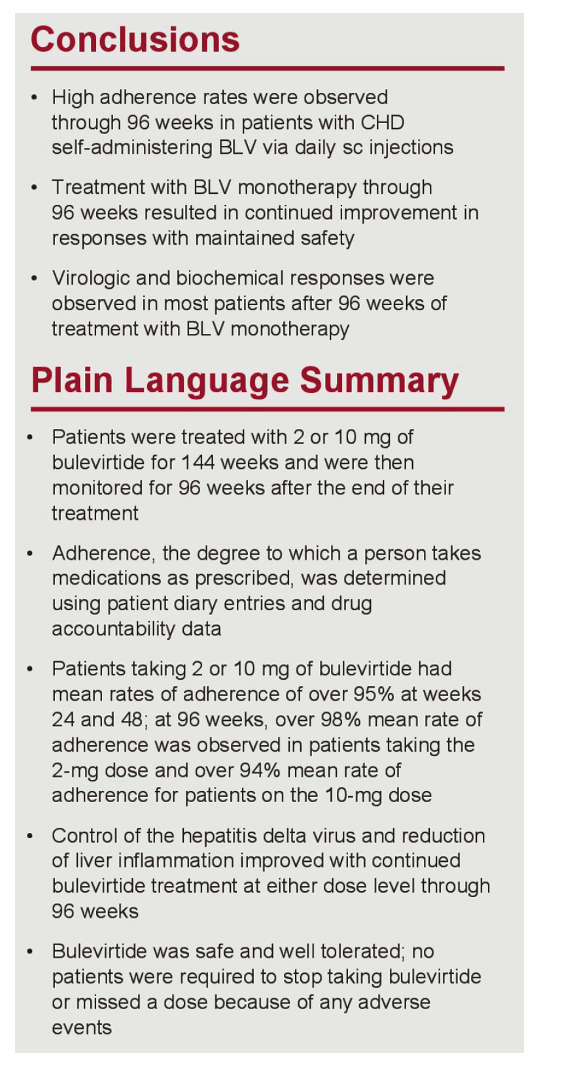
ABSTRACT
Bulevirtide (BLV), a novel first-in-class entry inhibitor of hepatitis delta virus (HDV), is approved in the EU for the treatment of chronic hepatitis delta (CHD) at a dose of 2 mg/d. The phase 3 study MYR301 (NCT03852719) showed BLV 2 or 10 mg/d to be safe and effective through 96 weeks, based on the combined endpoint of virologic (undetectable HDV RNA or a decrease of a2 log10 IU/mL from baseline) and biochemical response (alanine aminotransferase normalization). Here, we present an analysis of BLV adherence through 96 weeks in MYR301.
In total, 150 patients with CHD were randomized (1:1:1) and stratified based on the presence of cirrhosis: arm A: no active anti-HDV treatment for 48 weeks followed by BLV 10 mg/d for 96 weeks (n=51), and arms B or C: immediate treatment with BLV 2 mg/d (n=49) or 10 mg/d (n=50), respectively, each for 144 weeks, with follow-up of 96 weeks after end of treatment. BLV 10 mg/d was self-administered as 2 subcutaneous (sc) injections of 5 mg/d, and BLV 2 mg/d as 1 sc injection of 2 mg/d. This analysis focuses on arms B and C.
Treatment adherence was assessed at each visit using a patient diary and by study drug accountability (ie, the number of dispensed vials vs the number of returned vials [used and unused] of the study drug) collected at each visit. Adherence to BLV was computed as the ratio of the cumulative dose of BLV administered to the planned total dose at week (W) 96.
Baseline characteristics were similar between arms B vs C: mean (SD) age 44 (9) vs 41 (9) years, 61% vs 60% male, 84% vs 86% White, 47% vs 48% with compensated cirrhosis, and 65% vs 54% on concomitant nucleos(t)ide analogue therapy. In arms B (BLV 2 mg/d) and C (BLV 10 mg/d), 96% (47/49) and 94% (47/50) completed 96 weeks of treatment, respectively. Reasons for study discontinuation included withdrawal of consent (n=2 each from arms B and C) and physician decision (n=1 from arm C).
Mean adherence rates exceeded 95% for both arms at W24 and W48 and were numerically higher in arm B (Table 1). At W96, the mean adherence rates were 98.1% and 94.6% in arms B and C, respectively, and the mean number of missed doses per patient was less in arm B vs arm C (4.4 vs 6.1). When including only patients who completed 96 weeks of treatment, mean adherence rates increased to 99.8% and 99.9% in arms B and C, respectively.
Combined response rates continued to improve through W96 and remained similar between BLV 2 mg vs 10 mg (Table 1). BLV was safe and well tolerated; no serious adverse events (AEs) were attributed to BLV, and no AEs led to a missed dose or BLV discontinuation.
High adherence rates were achieved and maintained through W96 in patients self-administering daily BLV. Combined response rates continued to improve through 96 weeks of BLV monotherapy with maintained safety.
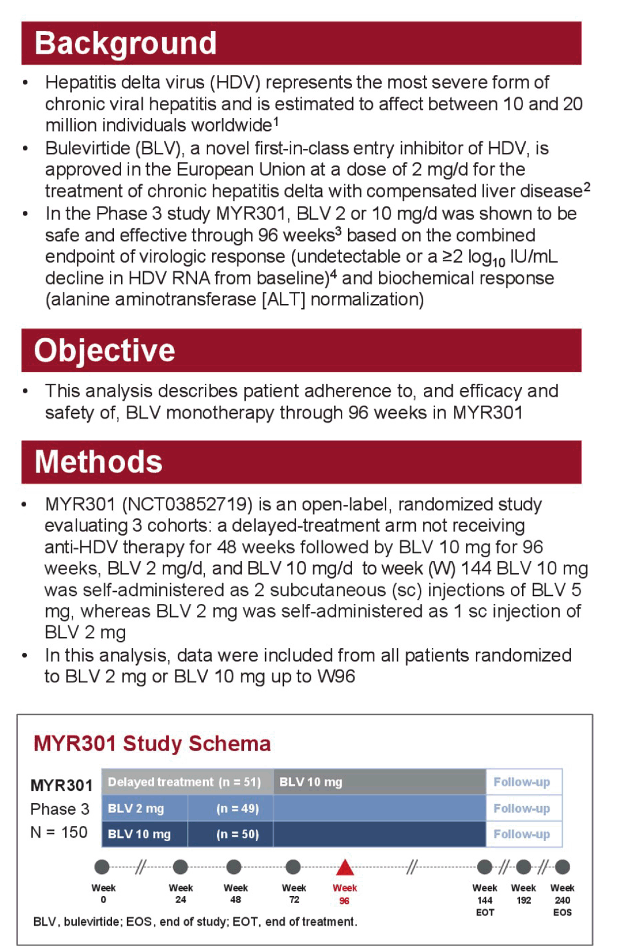
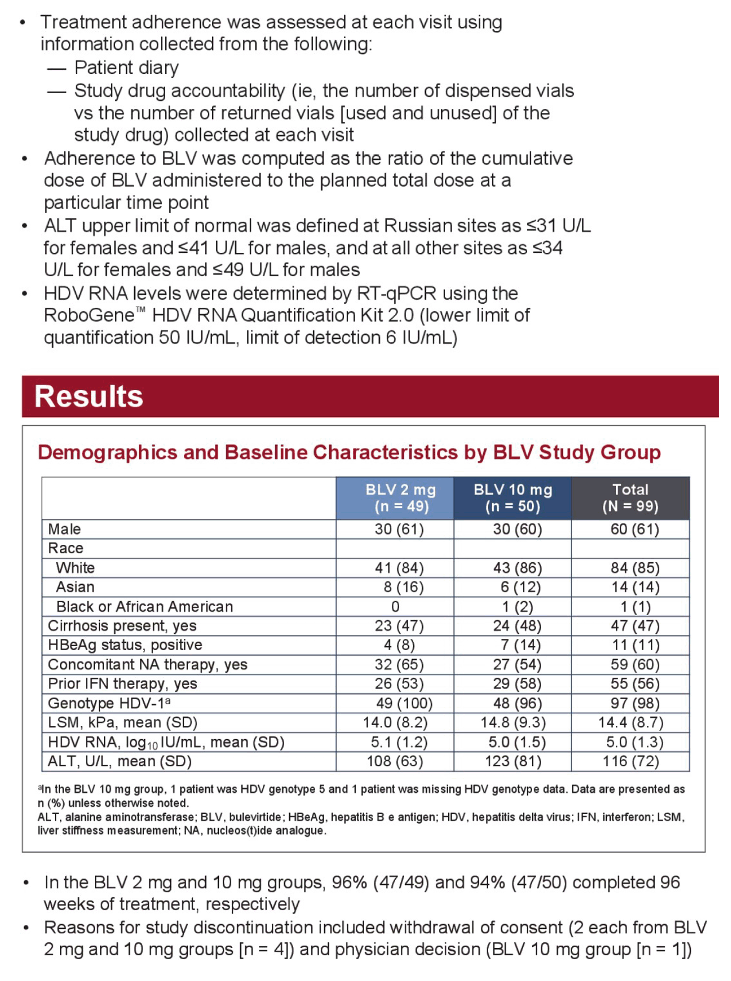
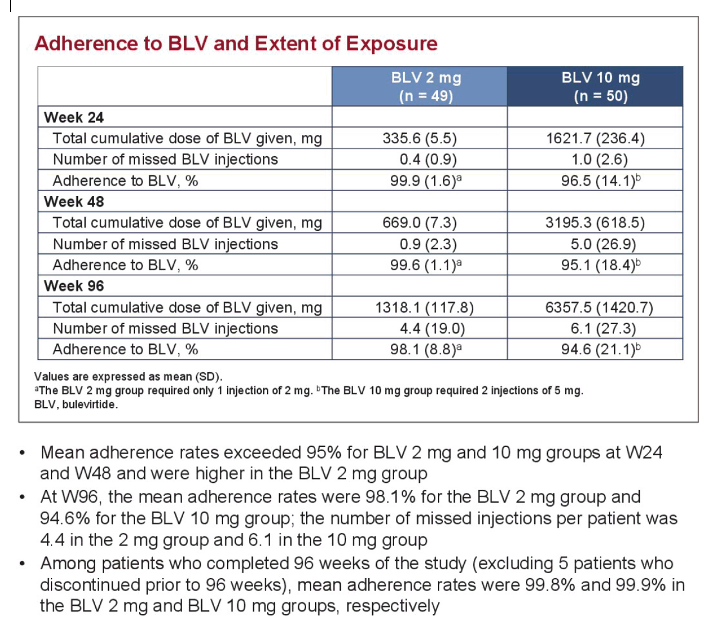
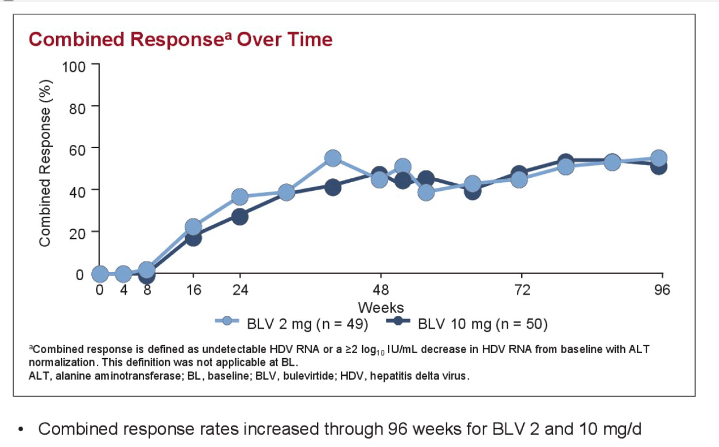
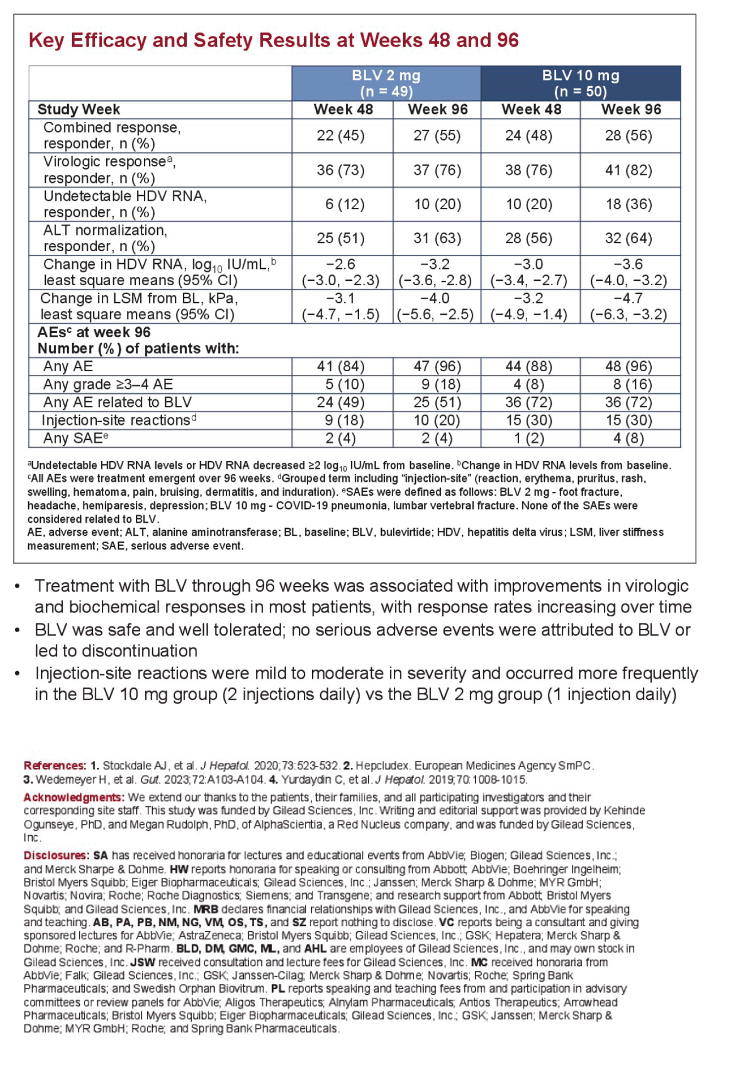
|
| |
|
 |
 |
|
|